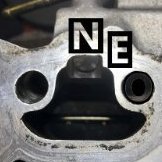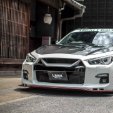How To: Replace R33 Climate Control Bulbs To Leds #2
Announcements
-
Similar Content
-
Latest Posts
-
Thanks for all the replies! I also wanted to ask if wheels that were fitted on Ford Falcons would fit the 350GTs as well? In the area I'm at there aren't that many options for secondhand wheels and new ones here are way out of my budget. From what I've seen, most of the wheels that are available that were fitted on Ford Falcons have an offset of +33 to +36, with a centre bore of 70.5mm whereas the stock 350GT's ones are 66mm, can't seem to find any hubcentric rings that fit that difference though.
-
215/45/18 tyres are probably a little on the low side compared to the factory tyre, it should be closer to a 245/45/19, which will get you about an extra 11mm of height, and should make you speedo read a bit closer to reality. 245/45/19s will be a bit too far the other way and you risk a speeding ticket as your speedo might read slower than your actual speed. 245/40/19s would be correct if you are going to 19in rims, they will give you a similar total diameter to the 245/45/18 tyres.
-
That's something I forgot to put in my list. The aggressive anti-squat in R32 is a f**king menace. I still need to decide if I'm going to drag the subframe out of my car and weld in the GKTech corrector kit. The main reason to dither is the need to switch to spherical joints in the lower arm to account for the twist induced in the rear pivot caused by lowering the front pivot. And yes...we do put better subframes in R32s, and I wish I'd gotten an S14 one instead of an A31 when I did the "take off and nuke it from orbit" HICAS delete all those years ago.
-
I have been looking at some setting on the alarms for the Q60 and what buttons do and so and also been looking for details on the alarm in my V37 which is a standard issue with the car. settings like window roll up and a few others seem to not work at all. i cant seem to find exact info on V37 alarms so Q60 is all i can really go off i have not tried 400Z alarm settings or info yet so that will be next. any one got like a sheet of info on the alarm system in the V37 as all my documents are in japanese but i thought the system would basically be like standard through similar models?
-
I had a fuel smell coming from the drivers rear and pulled the tank out to inspect where it was coming from, turns out the breather hose from the tank to the filler neck was perished. I’m going to Japan next week and I’ll grab it while I’m there pulled the oil tank apart and started cleaning this crap out of it, some brake cleaner and rags got it looking new again
-





Recommended Posts
Create an account or sign in to comment
You need to be a member in order to leave a comment
Create an account
Sign up for a new account in our community. It's easy!
Register a new accountSign in
Already have an account? Sign in here.
Sign In Now